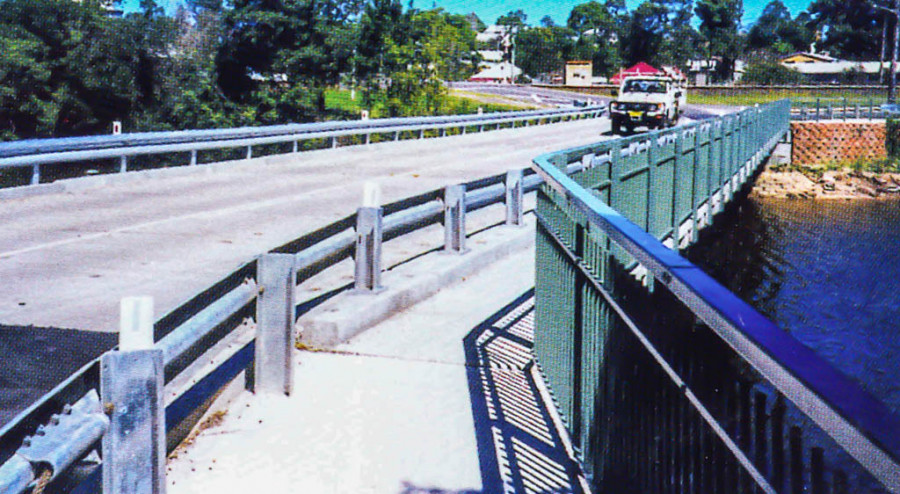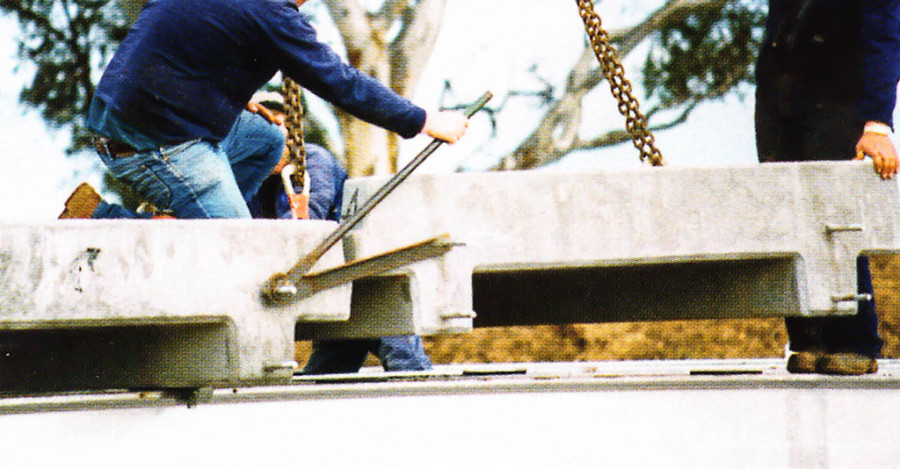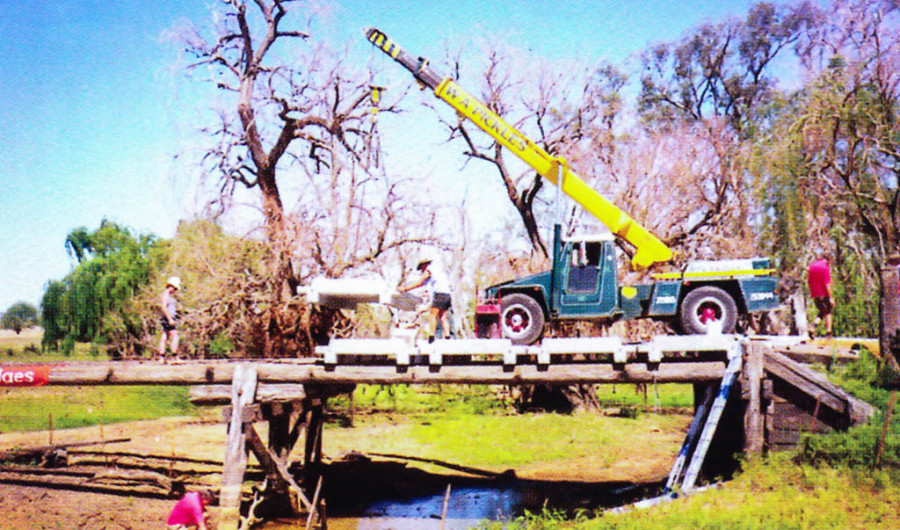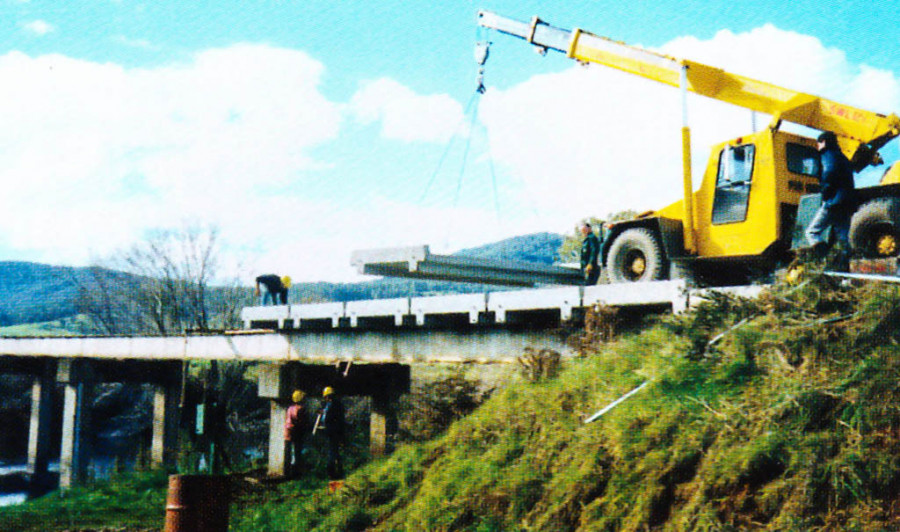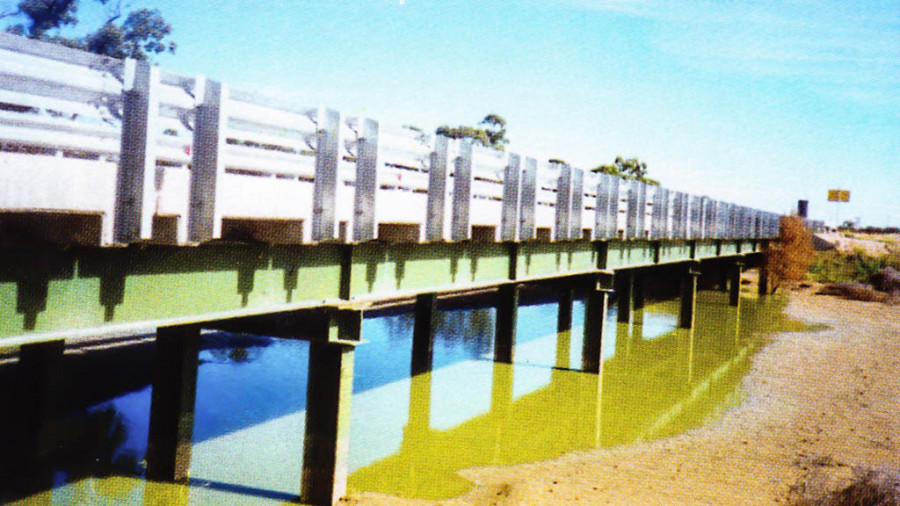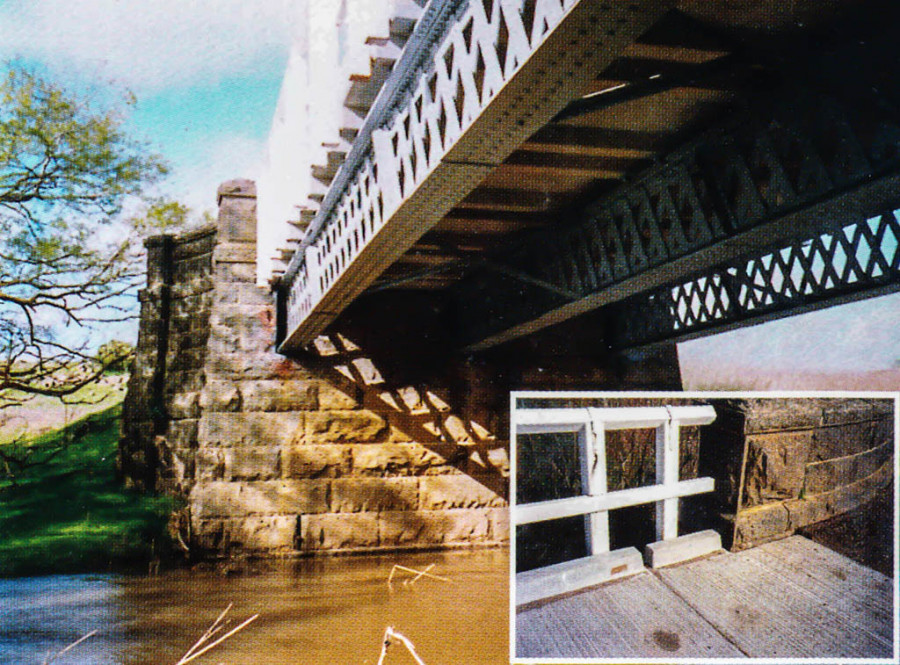Waldren Bridges Pty Ltd began by building farm bridges in rural Victoria and NSW, using steel girders and simple precast concrete deck slabs. Before long we were approached by several municipal engineers seeking to re-deck road bridges. Typically these had a badly deteriorated deck, but the sub-structure was quite sound. Replacement of the deck gave existing bridges a new lease of life for a fraction of the cost of a new bridge.
After completing one or two bridges and getting hands-on experience, Rob Wallace came up with a better design, now known as Quikdek. The design is simple, yet versatile, and has now been used to re-deck hundreds of bridges.
Fortunately, bridge widths on minor roads are fairly standard, 3.7 metres between kerbs for single lane bridges, 7.5 metres for double lane bridges. Nevertheless Quikdek moulds are adjustable to give any desired width.
Modular length is 2 metres, which is convenient for transport and handling without the need for large cranes. It also corresponds to the standard 2 metre and 4 metre guardrail post spacing. Of course no bridge deck length is a multiple of 2 metres, so solid end slabs are provided with each set of slabs, to make up the exact length. And often bridges are skewed. As well as matching the length the end slabs can also be made with a triangular or trapezoidal shape to match the skew angle.
Technical Features
Not high tech, Quikdek slabs are based on conventional reinforced concrete, which simplifies manufacture. The classic double-tee cross section provides a high strength/weight ratio without any need for pre-stressing. Hence they can span large girder spacings and distribute loads effectively, important for timber beams. Further, the ribs are inherently suitable for mounting guardrail posts. Overall depth is similar to that of timber decking, so the new deck level matches the road approaches.
Galvanised L shaped cleats are used to secure the slabs to steel girders, rubber pads acting as cushions between. For timber girders, galvanized hoops wrap around the timber. Drilling is not necessary in either case, the bolts for these fixings are screwed into ferrules cast into the underside of the decks. Careful measurements of the substructure enable the ferrules to be placed precisely prior to casting a set of Quikdek slabs.
One problem with concrete is that it takes a long time to cure, and days may elapse before a slab can be lifted from the mould. The inherent strength of the double-tee means that lifting can be made sooner, but this alone is not enough. Steam curing of course, means that days can be reduced to hours, but that involves significant costs. The answer was simple; preserve the warmth. When concrete hydrates it gives off heat, its temperature rises, and strength is gained much sooner. The simple expedient of covering the freshly poured deck with an insulation blanket meant that the slab temperature remained at least 15 degrees higher than ambient. This was sufficient to enable a 24 hour turn around, thereby doubling productivity.
By using a higher concrete grade than structurally necessary, even better results were obtained. As well as inherently higher strength the extra heat of hydration accelerates the curing process, so even in mid-winter frost conditions, the 24 hour production cycle could be maintained.
Customer Service
Mostly, Quikdek slabs are marketed to rural municipalities or their contractors. Each set of slabs comes with all bolts, rubber pads, guardrail and posts to complete the job, and a set of instructions. A few days before delivery a videotape/DVD showing all procedures is sent to the installation crew.
Much more than the proverbial IKEA Allen key; spanners, string lines, square, text pen, taps, and thread files, plus spare nuts and bolts (the crew invariably drop a few in the river). Also provided are a hydraulic jack to assist levelling with different rubber pad thicknesses, special tools to facilitate alignment, such as the “girder puller’’, which straightens bowed girders by means of jacking screws.
But the most useful tools are a pair of levers which have links that slip over the post studs of adjacent slabs. They control the descent of the slab as it is lowered by the crane. The levers have an eccentric cam-action which enables the final position to be easily adjusted by hand within a millimetre – damage free, safe, accurate, and fast.
The end result is that even an inexperienced crew can install the slabs as quick as the crane can lift them from the truck. A typical 20 metre long bridge can be re-decked in one day.

